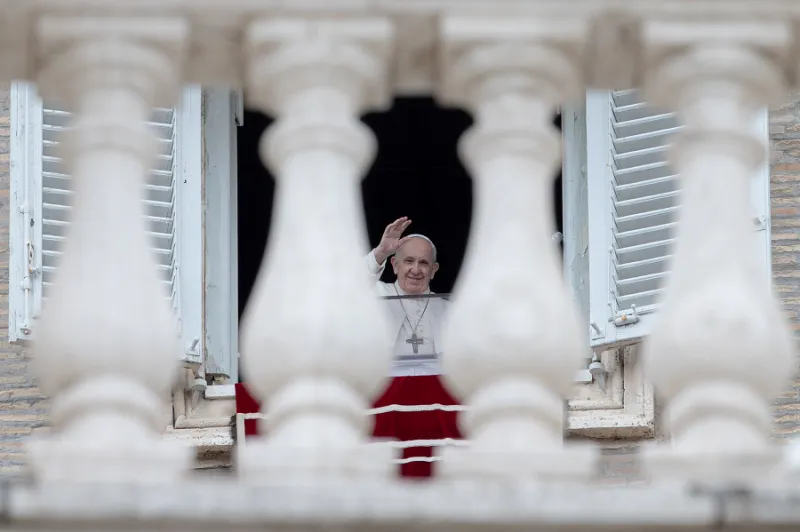
MPAA Rating: G
USCCB Rating: Not rated at the time of this review
Reel Rating: 4 out of 5 reels
It’s been less than a month since The Last Supper, but already there’s another major release about Jesus, though from a significantly different angle. The Kings of Kings is a wonderful story-within-a-story about the life of Christ as told by Charles Dickens (Sir Kenneth Branagh) to his six-year-old son, Walter (Roman Davis).
Based on a novel by Dickens, it is beautifully animated and is the perfect Easter outing for the whole family. I think it ranks among the best adaptations of “the greatest story ever told.”
The film begins with a rookie parenting mistake. Dickens is giving a live recitation of his classic A Christmas Carol when Walter and his cat Willa (the legendary Dee Bradley Baker) burst onto the stage from the curtain behind him. Stupidly, he brought three of his young children along and even let them play around backstage. Two of them calm down, but Walter insists that he is King Arthur, and the cat is his knight, even spiking his father’s behind with a wooden dagger.
Despite responding in a relatively mild manner by confiscating the sword, his wife Catherine (Uma Thurman) thinks Dickens was “a bit harsh” and insists he tell Walter a story when they return home, one with “forgiveness and understanding.” Since Walter loves kings, Dickens announces a tale of the “greatest king of all” with a “different kind of magic sword.”
Thus begins a private recitation of The Life of Our Lord, the most important story told to the most important audience.
Directed by Korean animator Seong-ho Jang, King of Kings hits all the right notes, highlighting the exciting parts that interest a child (the Calming of the Storm) but also a few harder moral teachings (the Woman caught in Adultery). Despite its short run time, Kings of Kings comes off as a complete narrative that doesn’t cut out any important details.
As the story progresses, Walter becomes more and more enamored with Jesus, which makes his passion and death incredibly tragic and his resurrection even more glorious. By the end, father and son reunite, and another soul is won for Christ.
Despite a narrative complicated with two interacting stories (think The Princess Bride or Orion and the Dark), Jang does a masterful job of weaving the two together. Occasionally, Dickens and Walter walk among Jesus like thought impressions, not interacting and wearing their Victorian clothes. Other times, they are time travelers in the Bible story itself and can converse with the characters.
My favorite moment is the calling of the twelve disciples. As Dickens names them, they appear as tiny men walking across a table while Willa pokes at them like mice. Jang frames the stories as two distinct styles. The Victorian world is more fleshed out and detailed, like a Pixar film, while the Jesus characters are elongated and reminiscent of puppets or Claymation. It’s a fantastic way to distinguish universes in a manner easily understood by children.
There’s a unique bond between a father and son in terms of their mutual faith in Jesus Christ. The Life of Our Lord was a short novel written by Dickens between 1846 and 1849 that the famous author never intended to publish. Like Tolkien’s Christmas letters, he composed it as a gift to his children, reading it aloud in the family home as an annual tradition on Christmas Day. For decades after his death, Dickens’ descendants continued the tradition, keeping the story a family secret.
This ended in 1933 when one of his unscrupulous grandchildren sold it to meet his debts. This relationship is brilliantly expressed in how Dickens lovingly guides Walter through the story. When a father tells his son the Passion, he feels the weight of the Father giving up His Son. When a child sees all that Jesus does for him, he recognizes this sacrifice in what his own dad gives up every day for his good.
The most common reaction to Jesus in the New Testament was θαυμάζω, often translated as “wonder” or “amazement.” Watching The King of Kings, I was able to again experience this wonder, both in the eyes of my children and my own heart. This is the best animated version of the story ever filmed and will most likely become a classic for ages to come.
If you value the news and views Catholic World Report provides, please consider donating to support our efforts. Your contribution will help us continue to make CWR available to all readers worldwide for free, without a subscription. Thank you for your generosity!
Click here for more information on donating to CWR. Click here to sign up for our newsletter.








Good moment to recall the wonderful 1927 film by Cecil B. de Mille which has the same name.